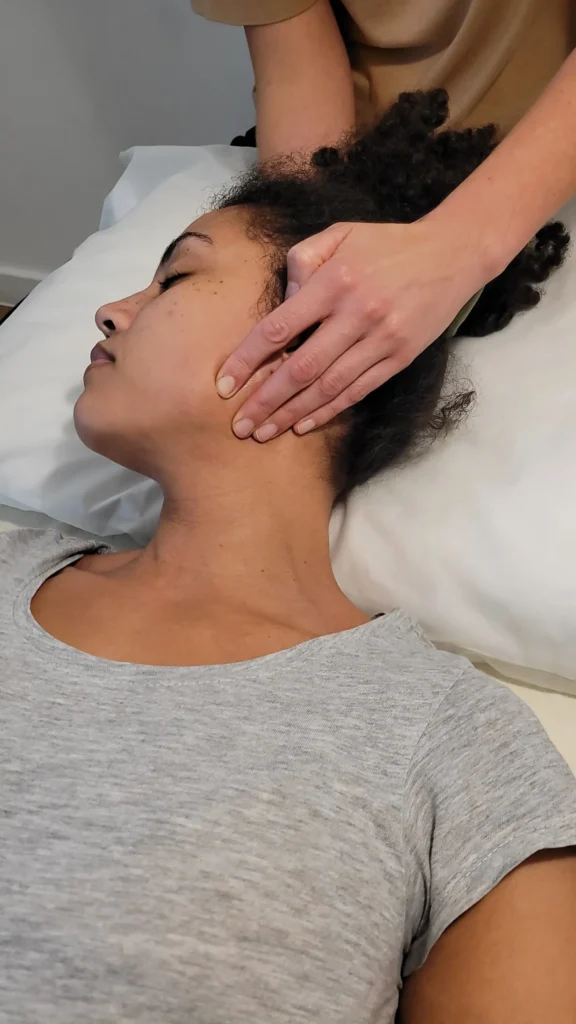TMJ Pain
TMJ Pain
TMJ (Temporomandibular Joint) Treatment refers to various approaches used to alleviate pain and dysfunction in the temporomandibular joints, which connect the jawbone to the skull. TMJ disorders can cause pain, discomfort, and limitations in jaw movement, often accompanied by clicking or popping sounds in the jaw, headaches, and even ear pain. Treatments for TMJ disorders can vary widely based on the severity and specific symptoms of the individual.

Common TMJ Treatment Approaches
Lifestyle and Self-Care Measures:
- Stress Management:Stress often contributes to jaw clenching, which can worsen TMJ pain. Stress-reduction techniques such as deep breathing, meditation, or yoga can help.
- Jaw Exercises:Gentle exercises can help improve jaw flexibility, strengthen jaw muscles, and reduce pain.
- Diet Modifications:A soft food diet can reduce strain on the jaw, giving it a chance to rest and recover. Avoiding hard, chewy, or sticky foods is usually recommended.
Physiotherapy:
Physiotherapists can guide patients through exercises and stretches to improve jaw function and reduce pain.
Osteopathy:
Gentle adjustments and myofascial release around the neck and jaw can help improve jaw alignment and relieve discomfort.
Alternative and Complementary Therapies
- Acupuncture:Tension relief through acupuncture, which may reduce TMJ pain.
- Massage Therapy:Therapeutic massage, particularly around the jaw, neck, and head, can reduce muscle tightness and help with pain management. Book TMJ Massage here.
Medication:
- Pain Relievers and Anti-inflammatories:Over-the-counter medications like ibuprofen can reduce pain and inflammation.
- Muscle Relaxants:In cases of severe muscle spasms or jaw tension, muscle relaxants might be prescribed.
- Botox Injections:In some cases, Botox injections may be used to relax muscles around the jaw and relieve pain.
Cognitive Behavioral Therapy (CBT):
TMJ pain is sometimes related to stress and behavioural habits. CBT can help address habits like clenching or grinding and teach coping mechanisms to manage stress and pain.
Surgery (for Severe Cases):
- Arthrocentesis and Arthroscopy:Minimally invasive procedures where fluid is injected into the joint to remove debris or treat inflammation.
- Open-Joint Surgery:In rare cases, open surgery may be necessary to repair or replace the TMJ if other treatments fail.
Oral Appliances (Mouthguards):
Custom-fitted mouthguards or splints worn at night can help prevent teeth grinding (bruxism) and clenching, reducing pressure on the TMJ. These devices can help align the jaw properly and relieve symptoms.
Benefits of TMJ Treatment
- Reduce jaw pain and discomfort
- Improve jaw movement and function
- Decrease symptoms like headaches, earaches, and facial tension
- Enhance overall quality of life by minimising discomfort and improving jaw health

